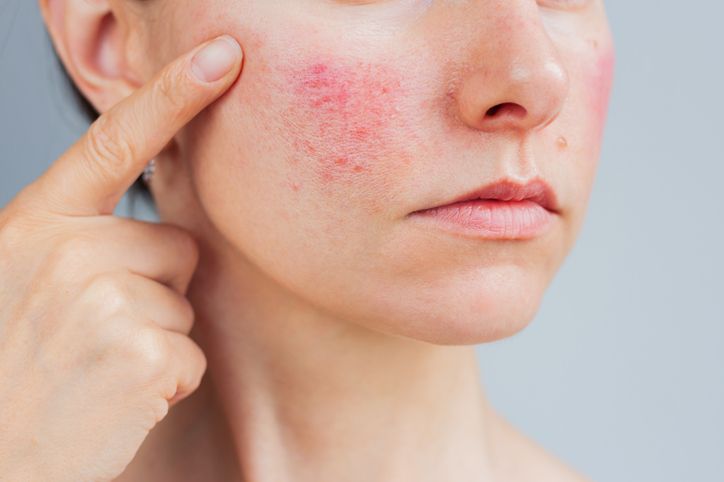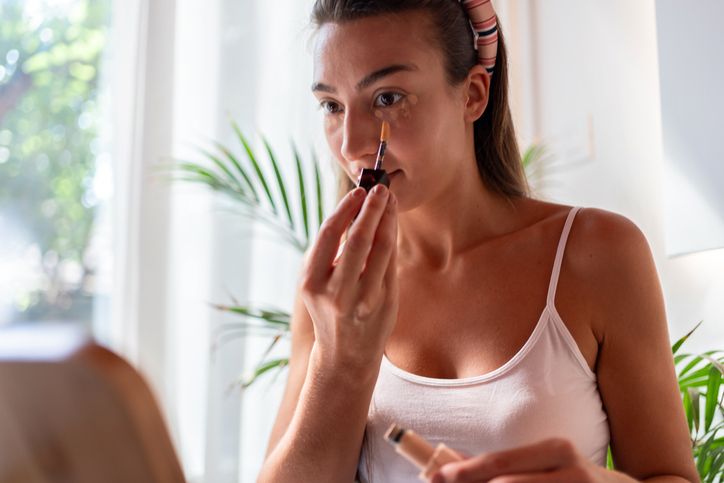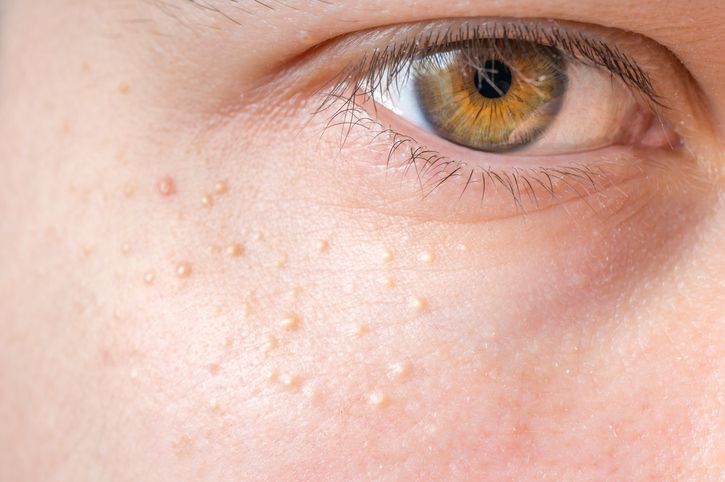- Home
- Trend
- Weight Loss Strategies
- Acne Tips
- Hair Health Information
- Blemish Removal Tips
- Acne Scar Removal Tips
- Muscle Building Techniques
- Intimate Care Tips
- Postpartum Intimate Care
- Eye Bags Wiki
- Tips for Face Slimming
- Secret of Permanent Hair Removal
- Breast Enlargement Tips
- Cure to Snoring
- Marionette Lines
- Skin-Tightening Secrets
Is hair weaving the same as wearing a wig? Many women think there’s no difference between the two, but hair weaving is actually another form of hair enhancement. There are many ways to add volume to thinning hair, and women facing issues like thinning hair, reduced density, receding hairline, or even bald spots and female-pattern baldness can all benefit from hair weaving. It provides an instant volumizing effect that visibly improves appearance. With today’s advanced techniques and a variety of price points and providers available, hair weaving looks incredibly natural and is quite different from traditional wigs. Want to know more about hair weaving and other hair-enhancing methods? Let’s dive in!
Hair Weaving: The Easiest Hair Loss Solution?

Many women equate hair weaving with wearing a wig and are therefore hesitant to try it. But even before discussing the production process, once someone with thinning hair puts on a hair weaving system, the bald or sparse areas are instantly concealed. From the outside, hair loss is no longer visible. The natural appearance of integrated hair is so convincing that even close friends often can’t tell it’s not the wearer’s real hair. That’s why many people find hair weaving both convenient and highly effective for improving hair loss issues—it’s arguably the simplest hair loss solution.
How Hair Weaving Works

So, why does hair weaving look so realistic and natural? The basic principle is similar to that of a wig, but with some key differences. Hair weaving uses real human hair, which is hand-woven onto a mesh that mimics the scalp. This mesh is then attached securely over the thinning area using clips or weaving techniques.
There are two main types of hair weaving: ready-made and custom-made. Ready-made options can be worn quickly but often lack a natural look. Custom hair weaving, on the other hand, is tailored to the individual’s scalp condition, hair loss pattern, color, thickness, and density, resulting in a more seamless blend with existing hair.
Hair weaving is a non-invasive method, meaning it leaves no scars or wounds on the scalp—making it suitable for most people experiencing hair loss.
免費體驗
F8 Hair Regrowth Treatment
1 Minute Self-Registration
Date should not be before minimal date
Types of Hair Weaving
Compared to early versions, today’s hair weaving systems are much more advanced in terms of technique, appearance, and realism. Many people with thinning hair have successfully restored a more youthful look with these systems. There are three main types of hair weaving, each with its own benefits. Let’s take a closer look:
Type 1: Clip-On Integration
This is the most common method. The integration hairpiece comes with custom-designed clips along the edges, which are clipped onto the wearer’s natural hair for secure attachment. There's no need to clip them on too tightly—just enough to keep the piece in place.
• Best for: People with partial hair loss or who want to preserve their existing top hair.
• Pros: Easy to remove and reattach; users can adjust or wash the piece themselves.
• Cons: Less secure than other methods; may shift or fall out more easily.
Type 2: Weaving Integration
This method is unique to hair weaving and doesn’t apply to regular wigs. It involves using the wearer’s own hair to weave the integration piece into place. The process is straightforward: first, the area to be covered is cleaned, then a professional weaves the integration hairpiece into the natural hair using thread. The piece is then trimmed slightly to blend with the existing hairstyle.
• Best for: Individuals with partial hair loss and sufficient natural hair for weaving.
• Pros: Very secure; users can engage in sports, swimming, and shampooing without worry.
• Cons: Cannot be removed at will; must be adjusted every few months as natural hair grows, which can cause shifting or loosening. Only professionals can re-weave the piece.
Type 3: Adhesive Integration
A newer method in recent years, this uses medical-grade double-sided tape to attach the hairpiece to the scalp. The integration piece is lined with adhesive and then pressed onto the balding area for complete coverage. It’s sweat- and water-resistant, allowing users to swim or exercise without worry.
After thoroughly cleaning both the scalp and the hairpiece, the piece is aligned with the thinning area and applied to the scalp. It can then be trimmed to blend in with the user’s natural hair. The medical-grade tape is proven not to irritate the scalp, and its adhesive strength remains stable even with repeated use.
• Best for: Individuals with localized hair loss or bald patches.
• Pros: Easy to apply and remove; allows for repositioning; hypoallergenic; users can go about their day confidently.
• Cons: The covered area may be less breathable, which could lead to sweating, itching, or odor.
The Process of Custom Hair Weaving
If you’re dealing with female hair loss, you might be considering trying hair weaving after learning about the different types. Not only is it convenient, but it also minimizes disruption to daily life. Unlike wigs, integrated hair stays firmly in place, allowing you to exercise or even withstand strong winds without worrying about slippage. Interested in how a custom hair weaving piece is made? Let us walk you through the steps:
Step 1: Professional Consultation
Just like with any hair loss treatment, hair weaving isn’t about grabbing any random hairpiece and hoping it works. Reputable hair weaving centers offer thorough consultations to help clients find the perfect fit.
A trained consultant will evaluate the cause and extent of your hair loss, your hair’s texture, density, and your lifestyle. They’ll then recommend the most suitable type of hair weaving. This is also the perfect opportunity to ask questions or express any concerns you may have.
Step 2: Custom Design
Since every individual’s hair loss pattern and hair texture are different, customizing the hairpiece ensures the most natural-looking result. Based on the initial assessment, the specialist will determine the size, color, density, and style of the integration piece.
The process is complex: real hair matching your natural color is woven onto a breathable mesh to closely mimic your original hair. Because real hair is used, the result is highly realistic and blends in seamlessly. After wearing the hairpiece, you can have it trimmed and styled however you like—no need to let hair loss limit your hairstyle choices.
Step 3: Wearing the Integration Piece
It usually takes just over a month to complete a custom hairpiece. Once ready, you’ll return to the center for the fitting. After cleaning both your scalp and the hairpiece, a professional will secure it using your preferred method—clips, weaving, or adhesive. A stylist will then trim and blend the hairpiece into your existing hair.
After that, you can return to your daily life—work, workouts, swimming, even hair washing—with confidence. The volumizing effect is incredibly lifelike, and the integrated hair is virtually indistinguishable from your own.
Advantages of Hair Weaving
Hair weaving has become increasingly popular because of its many advantages. Compared to other hair restoration methods, weaving is a non-invasive and quick way to boost hair volume. In terms of results, it outperforms many hair growth solutions.
Advantage 1: High Realism and Safety
Hair weaves use real human hair, which blends seamlessly with the wearer’s natural hair after styling and trimming. It’s often hard to tell if someone is wearing a hairpiece, as the weave can be completely concealed. Hair weaving specialists will assess the individual’s condition in detail to choose the most suitable strands for the weave. Most hairpieces weigh only 30 to 50 grams, so they rarely cause discomfort.
Compared to other common treatments like hair transplants or medication, hair weaving is much safer due to its non-invasive nature. There’s no need for surgery or oral drugs, so it poses virtually no risk of side effects. That’s why many people prefer weaving to improve the appearance of hair thinning or hair loss.
Advantage 2: Does Not Affect Daily Life
One of the biggest benefits of hair weaving is that it has minimal impact on everyday activities. Unlike synthetic wigs, which might fall off during swimming or exercise—or even be blown away by the wind—hair weaves are securely attached using special techniques. Experiments have shown that normal activities such as exercise or swimming don’t affect the appearance of the weave. Most of the time, it feels just like natural hair.
Many users say their lifestyle remains unchanged after getting a weave. That’s because weaving is both natural and comfortable. The hair net is made from breathable materials, so even long-term wear won’t cause the scalp to feel stifled.
Advantage 3: Instant Volume Boost
The effects of hair weaving are immediate. Unlike hair transplants or growth medications, which usually take at least three months to show results, a custom-made hair weave can be completed in just over a week. Once applied, it instantly covers bald areas and gives the appearance of fuller hair.
Advantage 4: Customisable Styles
Many people wrongly assume that hair weaves are rigid and fake-looking, like wigs. In fact, hair weaving is very different. Since real hair is used, the result is more natural than synthetic wigs. After application, a professional stylist will trim and shape the weave to blend with the natural hair, enhancing its overall appearance.
免費體驗
F8 Hair Regrowth Treatment
1 Minute Self-Registration
Date should not be before minimal date
Disadvantages of Hair Weaving
Despite its benefits, hair weaving isn’t perfect. Improper use—or just bad luck—can turn hair enhancement into even more hair loss. So why do some people avoid it altogether?
Disadvantage 1: Expensive Cost
Different hair weaving centres offer various pricing plans, but a single hairpiece can cost between HK$5,000 and HK$12,000, depending on the extent of hair loss. This is significantly more expensive than synthetic wigs, which cost just a few hundred dollars.
Some centres also offer maintenance services like trimming or conditioning the hairpiece—these incur additional costs, ranging from a few hundred to a few thousand dollars per session. Most people with weaves need to return every 2 to 3 months for a trim or adjustment, adding up to around HK$5,000 per year. Since most users continue wearing weaves long-term, the overall expense can be quite high over time.
Disadvantage 2: Regular Maintenance Required
As mentioned earlier, hair weaves are attached to natural hair using clips or weaving techniques. As your hair grows, it can affect the position and appearance of the weave. That’s why wearers must visit specific weaving centres every few months for maintenance.
Not just any hair salon will do—the trimming must consider the weave’s attachment, placement, and overall look. Only professional hair weaving technicians should perform this task.
Disadvantage 3: A Temporary Fix
While hair weaving delivers immediate volume, it does not stimulate hair regrowth. It only covers the bald spots temporarily—issues like male pattern baldness, thinning hair, or receding hairlines are still present beneath. Some people mistakenly believe that if the problem is hidden, it no longer exists. In reality, hair weaving doesn’t address the root cause of hair loss.
Disadvantage 4: May Worsen Hair Loss
Hair weaving is usually recommended for those with thinning hair or partial baldness—not complete baldness. It still requires some natural hair for the best results. However, long-term wear can suffocate hair follicles, leading to clogged pores and worsening hair loss.
Even though breathable materials are used, scalp ventilation is still reduced compared to not wearing a weave. This makes it harder for oils and dirt to be expelled from the scalp. In a sealed environment, sweat can build up, weakening the follicles and causing them to fall out.
Hair Weaving vs. Wigs: What’s the Difference?
Many women interested in hair weaving may wonder: what’s the difference between weaving and wigs?
Most synthetic wigs are made from man-made fibres that tend to look shinier and feel different from natural hair. The key advantage of wigs is affordability—they range from just tens to a few hundred dollars. They’re also easy to wear: older styles are simply placed over the scalp, while newer ones come with clips for added security. However, wigs often lack realism because they are mass-produced and not tailored to individual scalp shapes, hair colours, or hair loss patterns. As a result, they tend to stand out and are easily spotted as wigs.
The biggest differences between hair weaving and wigs are realism and stability. Hair weaves are made from real human hair and can be custom-designed to suit an individual's hair loss condition and scalp shape. They are also more securely attached using clips, weaving, or adhesive methods—making them more stable than regular wigs.
No Need for Weaving: Try the Perfect Medical F8 Hair Regrowth Treatment
Although hair weaving provides quick improvement in appearance, it is not a cure for hair loss. Improper use or poor hygiene can even worsen the problem. The best way to tackle hair loss is to treat it at the root—nurturing healthy follicles so your hair can grow back naturally and eliminate the need for weaving altogether.
The Perfect Medical F8 Hair Regrowth Treatment uses 650nm LLLT low-level laser technology, which penetrates the scalp and activates hair follicles. It strengthens follicular stem cells and dermal papilla, speeds up cell renewal, and improves blood circulation—revitalising the scalp for strong, healthy hair growth.
F8 also infuses potent hair-nourishing factors that remove oil, dirt, and chemical buildup from the scalp, unclogs hair follicles, and reduces inflammation and bacterial buildup. This promotes natural hair growth, so you can ditch the weave and enjoy thick, luscious hair once more.
Hair weaving is not a permanent solution. To truly resolve hair loss, including thinning crowns and receding hairlines, try Perfect Medical’s F8 treatment today—a safe, non-invasive laser therapy that deeply stimulates your scalp and triggers real hair regrowth.
Try Now: Perfect Medical F8 Hair Regrowth Treatment免費體驗
F8 Hair Regrowth Treatment
1 Minute Self-Registration
Date should not be before minimal date
FAQ

Which type of hair weaving is best?
Clip-in weaves are the most common type. The hairpiece is clipped onto your natural hair, making it ideal for those with partial hair loss or those who still have some hair on the crown. Weaving-type attachments are braided into existing hair and work best for those with some remaining hair. Adhesive weaves use biotape to stick the hairpiece onto the scalp, fully covering bald areas—suitable for those with patchy hair loss or baldness. Choose based on your hair condition and needs.
Can I still wash my hair with a weave?
Yes! One of the biggest perks of hair weaving is its low impact on your daily life. Unlike synthetic wigs, which can’t handle swimming or vigorous activity, woven hair is secured using specialised techniques. Even after washing, swimming, or working out, your weave remains in place and looks just like real hair.
What’s the difference between hair weaving and wigs?
Most wigs are made from synthetic fibres and look glossier than real hair. Weaves, on the other hand, use real human hair and offer higher realism and security. Wigs are usually premade and may not fit well, while weaves can be custom-designed and firmly attached using clips, weaving, or adhesive methods.
Should I choose hair weaving or a hair transplant?
Hair weaving is a non-invasive method that instantly hides bald areas but doesn't treat the root cause. Hair transplants are surgical procedures that move healthy hair follicles to balding areas for regrowth. While effective, they carry risks like infection. You should consult a hair loss specialist to determine the most suitable option for you.
Can I wear a hair weave long-term?
Some ads claim you can wear weaves long-term without affecting scalp health, but extended use can block follicle breathing and worsen hair loss. Despite using breathable materials, weaves reduce scalp ventilation, making it harder to expel oils and dirt. Sweat buildup may clog follicles, weaken them, and accelerate hair loss.









